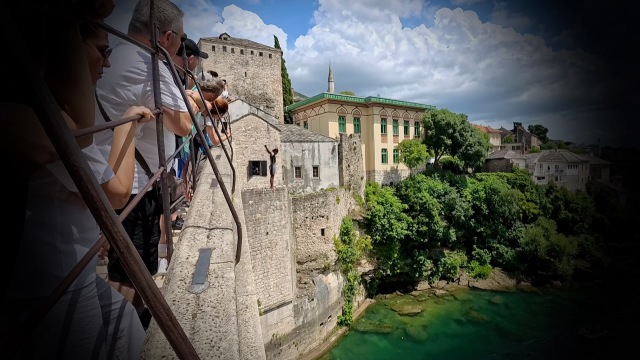I’d not followed the Yugoslav Wars, 1991 to 2001, splitting Yugoslavia into 6 new republics.
I’d not realized that Bosnia and Herzegovina are one of those 6 nations — so I signed on to a popular day trip out of Dubrovnik, Croatia. Joining a tour makes the border crossing out of the EU easier.
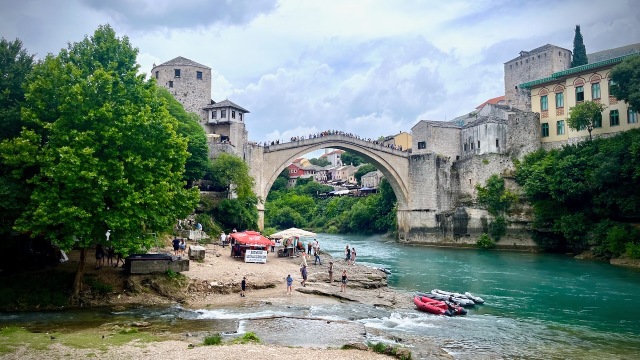
The highlight was a morning stop at Kravica (Kravice) waterfall. It’s even more magical than photos reveal.
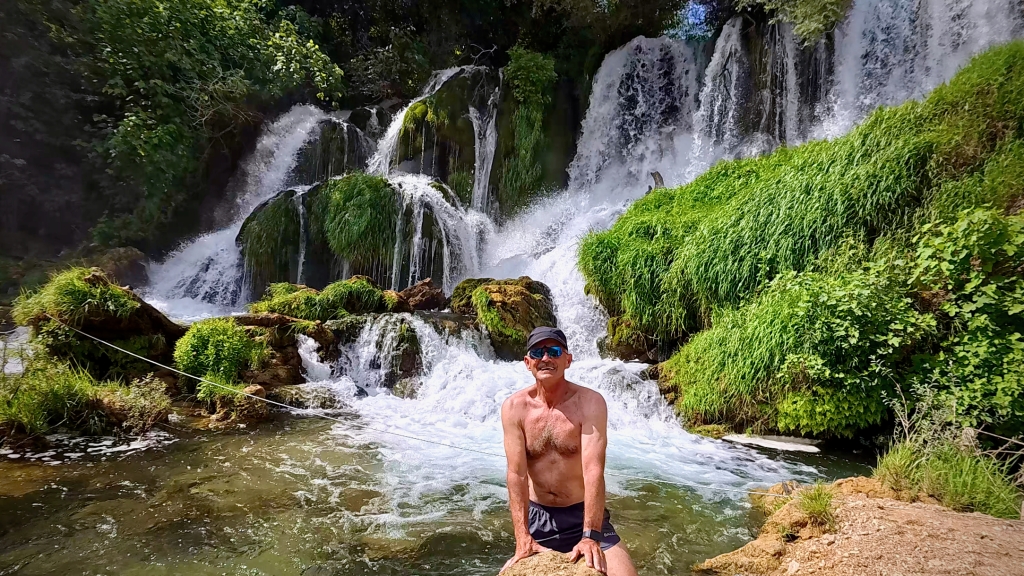
25m high. 120m wide.
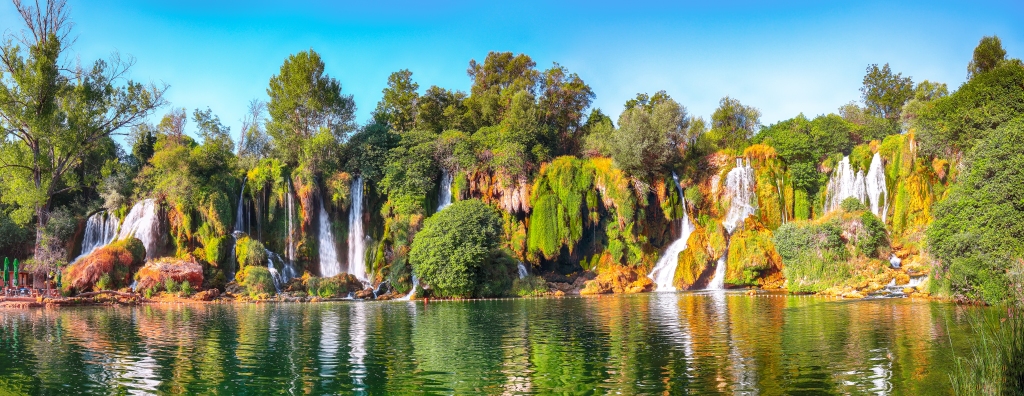
Unlike many similar scenic waterfalls around the world, you can swim and boat in this one.
Click PLAY or watch it on YouTube.
The other major stop was at the interesting historical capital of Herzegovina ➙ Mostar.
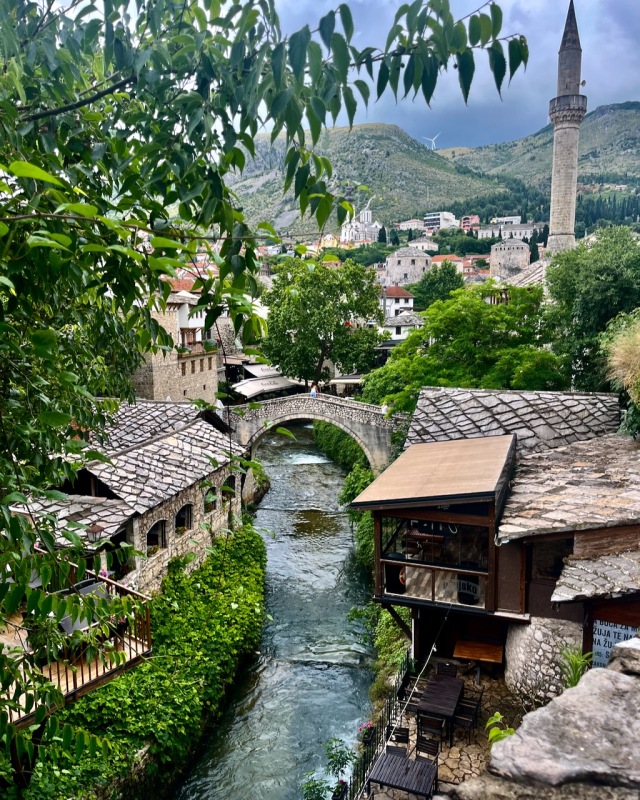
Mostar was named after the bridge keepers (mostari) who guarded the Stari Most (Old Bridge) over the Neretva during the Ottoman era.
Commissioned by Suleiman the Magnificent in the 16th century, completed in 1566, it’s one of Bosnia and Herzegovina’s most visited landmarks, and is considered an exemplary piece of Islamic architecture in the Balkans.
A monumental project to rebuild the Old Bridge, which was destroyed during the Bosnian War, to the original design, and restore surrounding structures and historic neighbourhoods was initiated in 1999 and mostly completed by spring 2004. The money for this reconstruction was donated by Spain.
In July 2005, UNESCO inscribed the Old Bridge and its closest vicinity onto the World Heritage List.
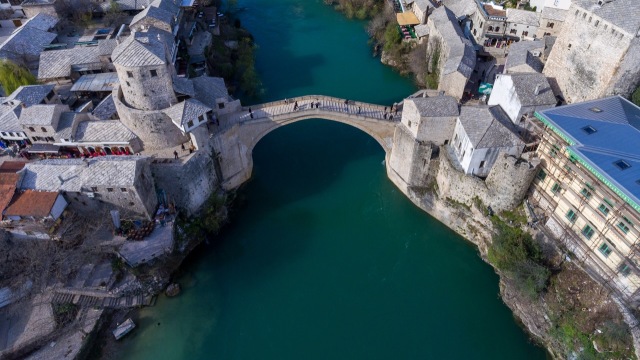
Tourists wait around to watch young people jump. They’ll do it for about 50 EU in combined donations.
There are plenty of beautiful mosques in Mostar.
Our guide recommended a restaurant — and it was excellent, though not inexpensive.
Like Argentina, this is a MEAT eating nation. So I had the mixed platter including several of the local favourites. A BIG lunch. Couldn’t finish it.
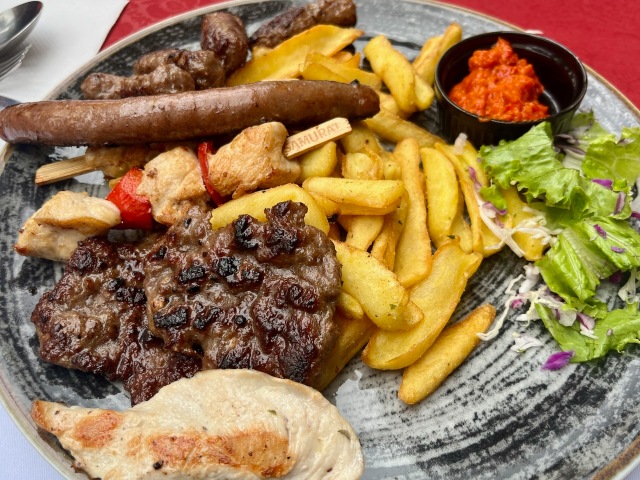
The new nations, aside from (possibly) Slovenia and Croatia, are struggling. Yugoslavia became: Slovenia, Croatia, Bosnia and Herzegovina, Montenegro, Serbia, and Macedonia (now called North Macedonia).
Benevolent dictator Josip Broz Tito held factions together until his death in 1980. Once he died, the stupidity began. A good argument against organized religion is religious conflict.
___
I learned more about Bosnia and Herzegovina from my excellent tour guide.
Bosniaks are the largest group, Serbs the second-largest, and Croats the third-largest.
A three-member presidency is made up of one member from each of the three major ethnic groups.
Sarajevo is the capital and the largest city.
From the late 19th century until World War I, the country was annexed into the Austro-Hungarian monarchy. In the interwar period, Bosnia and Herzegovina was part of the Kingdom of Yugoslavia.
After World War II, it was granted full republic status in the newly formed Socialist Federal Republic of Yugoslavia.
In 1992, following the breakup of Yugoslavia, the republic proclaimed independence. This was followed by the Bosnian War, which lasted until late 1995 and ended with the signing of the Dayton Agreement which was reached at Wright-Patterson Air Force Base near Dayton, Ohio, United States, finalized on 21 November 1995
These accords put an end to the three-and-a-half-year-long Bosnian War, which was part of the much larger Yugoslav Wars.
My guide from Mostar told us the government is a MESS. This nation will not be joining the EU any time soon — even though he wants them to.

